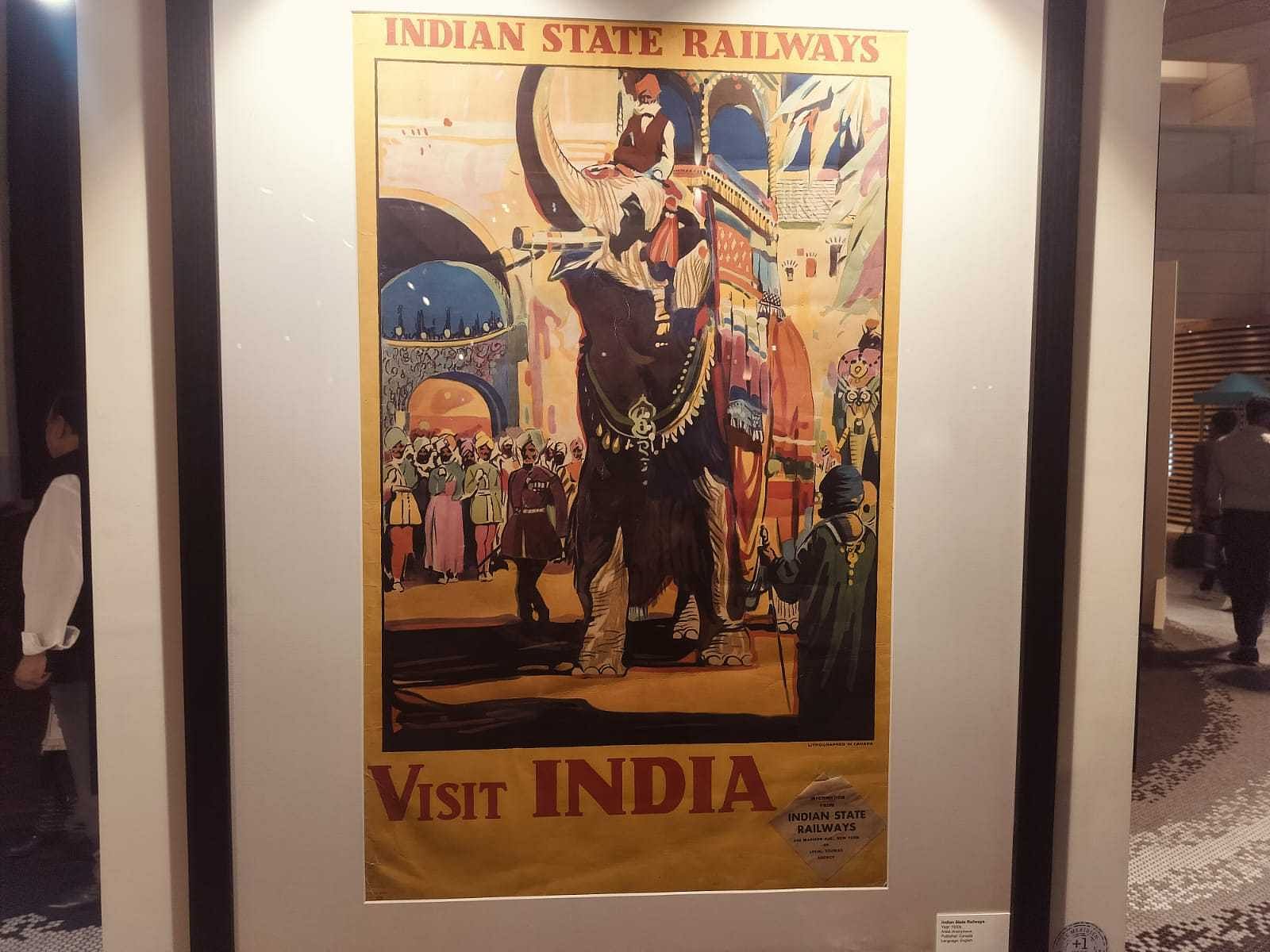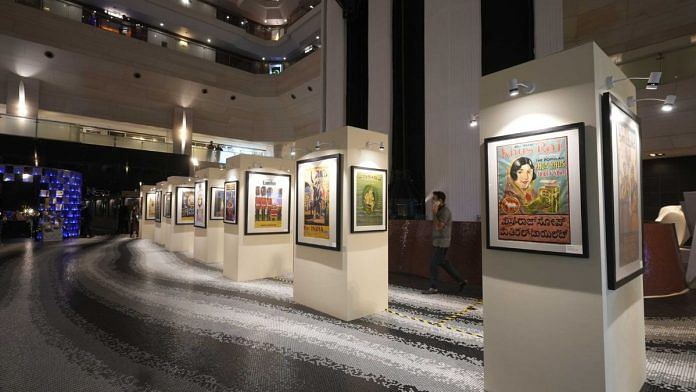New Delhi: From Goddess Lakshmi in a soap commercial to a huge elephant advertising the Indian Railways–brands deployed vibrant iconography to tell their story in the early days of advertising.
An exhibition at Le Meridien in New Delhi showcases 29 vintage ad posters collected over the years by the hotel’s director, Tarun Thakral. Acquired from international private collectors, remote shops in India, and online exhibitions, Thakral possesses 5,000 hand-drawn posters that tell the story of a nascent Brand India. “There has been no cataloging of these posters, not even by the brands themselves. It’s really unfortunate. Legendary painters like MV Dhurandhar had drawn some of these, they are a part of our cultural heritage,” Thakral told ThePrint. The exhibition is on display till 15 March.
Guests at the hotel and Thakral’s acquaintances who attended the inauguration of the posh exhibition were greeted with snacks, tea and mocktails. The hotel’s director entertained his audience, which included inquisitive journalists and excited friends. The most fascinated were foreign nationals, including a Japanese delegation, that was taken over by the vividness of the commercial artworks.
Some of the prominent brands featured in the exhibition were Air India, the Indian Railways and Eveready. The collection boasts a variety of art styles drawn from across India. Some less popular and now defunct brands were also displayed–Vinolia Cold Cream Bath Soap, Khus-Khus toilet soap, and Goodyear tyres.
One of the posters showed a school textbook-like drawing of a little boy holding an Eveready torch, illuminating the night. Another was a princely photograph of a magician named ‘Sorcar’, calling himself the ‘world’s greatest magician’, advertising for his show.

Also read: Why Red Fort isn’t like an emperor’s palace—New book explains its intelligent architecture
Indian Railways
The posters for Indian Railways, Thakral’s personal favourite, were a clear standout. They were also the most diverse. Some promoted tourism in India by showing a celebratory fare around an elephant, or by portraying the Dussehra mela through the faces of Ravana, Meghanada, and Kumbhakarna. Different zones of the railways were advertised using paintings depicting regional cultures.

According to Thakral, the posters show how an advertisement transcends the boundaries of its commercial purpose to become an artistic expression. “It is a time capsule that gives you a glimpse of the dawn of Independence through advertisements promoting indigenous products, reflecting a nation’s escalating self-belief,” he said.
The vintage ads had one striking similarity–Hindu gods were the big models driving sales of products. And the advertisers never ran out of colour and artistic styles to convey their brand stories. For an art designer working in contemporary ad agencies today, the exhibition was like a dream.
Collector, hobbyist
Tarun Thakral started his career at the Le Meridien hotel in the 90s and worked up the corporate ladder there, yet he didn’t confine the scope of his abilities within the premises of his workplace.
Thakral acquired a taste for conserving historical artefacts while working at a hotel in New York. During his time in the US, he expanded his worldview by observing exhibitions and engaging with hotel guests working on art preservation. That’s when Thakral realised that Indians weren’t taking care of their rich history.
“When I returned to India, I was still fascinated by the preservation efforts in the US. And I too started preserving small artifacts like gramophones, lamps, and then gradually, cars,” he said.
Thakral is the founder-director of Gurugram-based Heritage Transport Museum, which he founded in 2013.
He said the funding for his collections comes from his savings. “These are all purely my investments. I don’t come from money, all is self-acquired.”
The poster collection presented by Thakral could become India’s one-of-a-kind print advertising museum. For now, it will be preserved and cataloged as the Tarun Thakral Archival Collection.
(Edited by Ratan Priya)



